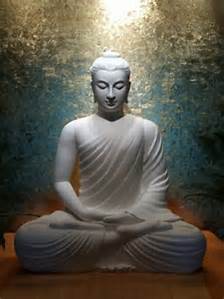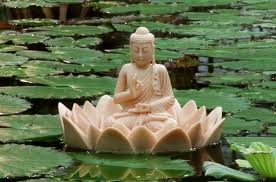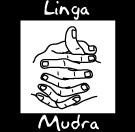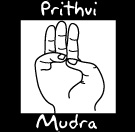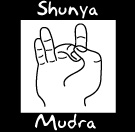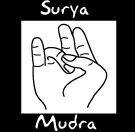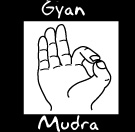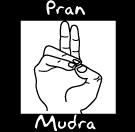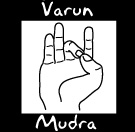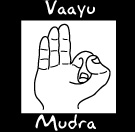The mind is ever active. Whenever you make time to have a few moments to yourself, you end up getting distracted by the worries and problems of the earthly life. Thoughts like whether you are doing the right thing, or where you are headed, how to make more money, how you will get ahead at work, and a million other things keep getting in the way. To take charge of your life, an effective way to approach these problems without overwhelming yourself is to spend some quiet time with your mind, when the part that is often unused can take over, and give yourself the joy of becoming aware of the infinite abundance the Universe blesses us with daily. Prepare yourself to accept with an open heart the new thoughts, ideas and the gifts of love, harmony and balance you are about to receive.
In the art of meditation there are techniques used to assist in stress relief, insomnia, anxiety and emotional distress. It’s great for studying and concentrating as it aids in memory, and its a wonderful treat for the soul. There are many wonderful rewards behind the practice of Meditation. Discover them!
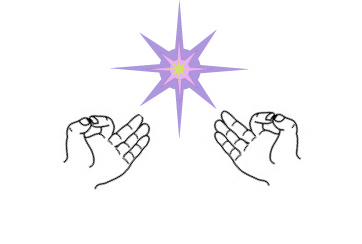
~ Meditate ~
- Close your eyes -knowing (telling yourself) this will only take a few minutes of your time.
- Breathe deeply.
- Calm your mind and relax your body: Connect with your surroundings, then gently shift your focus to hear the silence within you. First your body, then your mind. Listen with love.
- Breathe deeply.
- Dismiss distractions by focusing on relaxing your body. Part by part surrender to the weight of your body.
- Let your consciousness expand, with any limits. Let it do what It knows to do, and just flow.
- When thoughts arise, gently filter them away from the forefront of your mind. Allow them to shift to the back of the mind. As if a TV was on in another room, you can hear it, but it does not distract you.
- Keep your heart and mind open to the infinite possibilities the universe constantly sends your way.
- Be willing and accepting, without judgment.
Meditation -like yoga- originated in Vedic Hunduism many centuries ago, and it was much later adopted into a wide variety of practices of religious and non-religious formats which emphasize mental activity or quiesscence.
The English word comes from the Latin meditatio, which originally indicated every type of physical or intellectual exercise, but which later could perhaps be better translated as “contemplation”.
When we meditate we are allowing our brain to function in ways that it does not do so when the conscious mind is awake. It is when we quiet the most active part of our mind and yield to the inspiring world of our subconscious. The goals we wish to achieve when we meditate are various, beginning with spiritual enlightenment, to the transformation of attitudes, to better cardiovascular health and for the union of our energy body with the energy of the Universe. The benefits are endless, including an unlimited source of health and well-being, and overall balance and abundance.
The following are some fundamental definitions of Meditation:
– a state that is experienced when the mind dissolves and is free of all thoughts
– focusing the mind on a single object (such as a religious statue, or one’s breath, a mudra or a mantra)
– a mental “opening up” to the divine, invoking the guidance of a higher power
– reasoned analysis of religious teachings
These practices are found within Eastern religions as well as some secular contexts, such as the martial arts. A man called Edgar Cayce taught that “Through prayer we speak to God. In meditation, God speaks to us”.
From the point of view of psychology, meditation can induce an altered state of consciousness.
It is easy to observe that our minds are continually thinking about the past (memories) and the future (expectations). With intention it is possible to slow down the mind. We are able to observe a mental silence, also called experience of the present moment. This is a subjective sense of being connected with the universality of being. Meditation is the method one may follow to verify this experience. It is an experiential means of separating thoughts from the part of our consciousness which perceives the thoughts, the observer. By disengaging our mind we are able to observe the more subtle details and gain better control over what we give attention to. The experience of thoughts winding down and stopping is also known as timeless awareness.
TYPES OF MEDITATION
According to research, the different types or techniques of meditation can be classified according to their focus. That is, whether they focus on the field or background perception and experience, also called mindfulness, or whether they focus on a preselected specific object, also called “‘concentrative’ meditation.” There are also techniques that shift between the field and the object.
Meditation, to reflect on the translation of “contemplation,” is also a method of essay or contemplative writing in which one does continuous and profound contemplation or musing on a subject or series of subjects of a deep nature.
There is also “outward meditation” (when we open up and send energy out and receive “visions”) and “inward meditation” (when you concentrate on and visualize something that you desire, like recreating the Safe Place.
While meditation focuses on mental or psycho-spiritual activity, this is of course only one of several spheres of human existence; and we are social beings as well as individuals. Most traditions address the integration of mind, body, and spirit (this is a major theme of the Bhagavad-Gita); or that of spiritual practice with family life, work, and so on.
THE ENVIRONMENT & OTHER IMPORTANT DETAILS
The immediate meditative environment is often held to be important.
A well equipped Dojo is not necessary, just as long as the space to use is clean and free of any type of clutter.
Quiet is often held to be desirable, and some people use repetitive activities such as deep breathing, humming or chanting to help induce a meditative state. During the time of meditation it is strongly recommended to disconnect or turn off any phones, tv and radio. However, if music is desired during the practice see that it is soft, relaxing music that will inspire tranquility and love, as sound is also another tool many meditators/practitioners like to use.
There exist other details that are shared by more than one religion. One example would be “navel-gazing,” which is apparently attested within Eastern Orthodoxy as well as in Chinese Qigong practice. Another would be the practice of focusing on the breath, which is found in Orthodox Christianity, Sufism and numerous Indic traditions.
Even regular mundane tasks are to invite a moment of meditation, for example when we come in any type of contact with water.
If at all possible, place a nice, green, healthy plant nearby. Water is also a good omen to have around, specially if its running water like a water fountain, a candle and incense are also beneficial. These components represent the elements of Earth, Water, Fire and Air.
Posture is also an important step in the practice of meditation.
Purpose drives us to practice meditation and focusing on the intention is what helps achieve a successful meditation session.
PURPOSES AND EFFECTS OF MEDITATION
The purposes for which people meditate vary almost as widely as practices. Meditation may serve simply as a means of relaxation from a busy daily routine; as a technique for cultivating mental discipline; or as a means of gaining insight into the nature of reality, or of communing with one’s God. It has been reported improved concentration, awareness, self-discipline and equanimity through meditation. Also an increase in patience, compassion, and the understanding of other virtues and morals. Feelings of calm or peace, and/or moments of great joy. Experience of spiritual phenomena such as Kundalini, extra-sensory perception, or visions of deities, saints, etc.
Some people have even experienced “Miraculous” abilities such as levitation (or also called yogic-flying).
Some traditions acknowledge that many types of experiences and effects are possible, but we must keep in mind the spiritual purpose of the meditation, and not be distracted by lesser concerns. For example, Mahayana Buddhists are urged to meditate for the sake of “full and perfect enlightenment for all sentient beings” (the bodhisattva vow).
HEALTH APPLICATIONS AND CLINICAL STUDIES OF MEDITATION
In the recent years there has been a growing interest within the medical community to study the physiological effects of meditation. Many concepts of meditation have been applied to clinical settings in order to measure its effect on somatic motor function as well as cardiovascular and respiratory function. Also the hermeneutic and phenomenological aspects of meditation are areas of growing interest. Meditation has entered the mainstream of health care as a method of stress and pain reduction. For example, in an early study in 1972, transcendental meditation was shown to affect the human metabolism by lowering the biochemical byproducts of stress, such as lactate, decreasing heart rate and blood pressure and inducing favorable brain waves.
As a method of stress reduction, meditation is now often used in hospitals all over the country in cases of chronic or terminal illness to reduce complications associated with increased stress including a depressed immune system. There is a growing consensus in the medical community that mental factors such as stress significantly contribute to a lack of physical health.
According to research – Dr. James Austin, a neurophysiologist at the University of Colorado, reported that Zen meditation rewires the circuitry of the brain. This has been confirmed using sophisticated imaging techniques which examine the electrical activity of the brain.
Dr. Herbert Benson of the Mind-Body Medical Institute, which is affiliated with Harvard and several Boston hospitals, reports that meditation induces a host of biochemical and physical changes in the body collectively referred to as the “relaxation response” (Lazar et.al, 2003). The relaxation response includes changes in metabolism, heart rate, respiration, blood pressure and brain chemistry. Benson and his team have also done clinical studies at Buddhist monasteries in the Himalayan Mountains.
Among other well-known studies within this particular field of interest we find the research of Jon Kabat-Zinn and his colleagues at the University of Massachusetts who have done extensive research on the effects of mindfulness meditation on stress (Kabat-Zinn et.al, 1985; Davidson et.al, 2003)
MEDITATION AND THE BRAIN
Mindfulness meditation and related techniques are intended to train attention for the sake of provoking insight. Think of it as the opposite of attention deficit disorder ADD. A wider, more flexible attention span makes it easier to be aware of a situation, easier to be objective in emotionally or morally difficult situations, and easier to achieve a state of responsive, creative awareness or “flow”.
One theory, presented by Daniel Goleman & Tara Bennett-Goleman (2001), suggests that meditation works because of the relationship between the amygdala and the prefrontal cortex. In very simple terms, the amygdala is the part of the brain that decides if we should get angry or anxious (among other things), and the pre-frontal cortex is the part that makes us stop and think about things (it is also known as the inhibitory centre).
So, the prefrontal cortex is very good at analyzing and planning, but it takes a long time to make decisions. The amygdala, on the other hand, is simpler (and older in evolutionary terms). It makes rapid judgements about a situation and has a powerful effect on our emotions and behaviour, linked to survival needs. For example, if a human sees a lion leaping out at them, the amygdala will trigger a fight or flight response long before the prefrontal cortex knows what’s happening.
But in making snap judgment, our amygdalas are prone to error, seeing danger where there is none. This is particularly true in contemporary society where social conflicts are far more common than encounters with predators, and a basically harmless but emotionally charged situation can trigger uncontrollable fear or anger — leading to conflict, anxiety, and stress.
Because there is roughly a quarter of a second gap between the time an event occurs, and the time it takes the amygdala to react, a skilled meditator may be able to intervene before a fight or flight response takes over, and perhaps even redirect it into more constructive or positive feelings.
Some studies of meditation have linked the practice to increased activity in the left prefrontal cortex, which is associated with concentration, planning, meta-cognition (thinking about thinking), and with positive affect (good feelings). There are similar studies linking depression and anxiety with decreased activity in the same region, and/or with dominant activity in the right prefrontal cortex. Meditation increases activity in the left prefrontal cortex, and the changes are stable over time — even if you stop meditating for a while, the effect lingers.
Meditation and the EEG
Meditation also effects brain wave production as measured by an EEG machine. While the brain at a waking state is primarily in the Beta range of frequencies (14 – 21 cycles per second), while under meditation the brain tends to slow down the Alpha range (7 – 14 cycles per second). One of the first Americans to study the effects of meditation on brainwave production was Jose Silva who founded the Silva Method. Silva theorized that meditation, in addition to stress relief could also be used for enhancing creativity and developing intuition.
Electroencephalographs (EEG) recordings of skilled meditators showed gamma wave activity that gradually expanded across the brain during meditation. Gamma waves indicate synchrony between sections of the brain. These meditators had 10 to 40 years of training in Buddhist-based mental training. EEGs done on meditators who had received recent training turned up considerably less synchrony.
The experienced meditators also showed increased gamma activity while at rest and not meditating. The results of the study do not make clear whether meditation training creates this activity or if individuals with high gamma activity are attracted to meditation. (Antoine Lutz & Richard J. Davidson, 2004)
Indulge in the discipline of Meditation and allow yourself to receive the extraordinary rewards the practice leaves you with.

